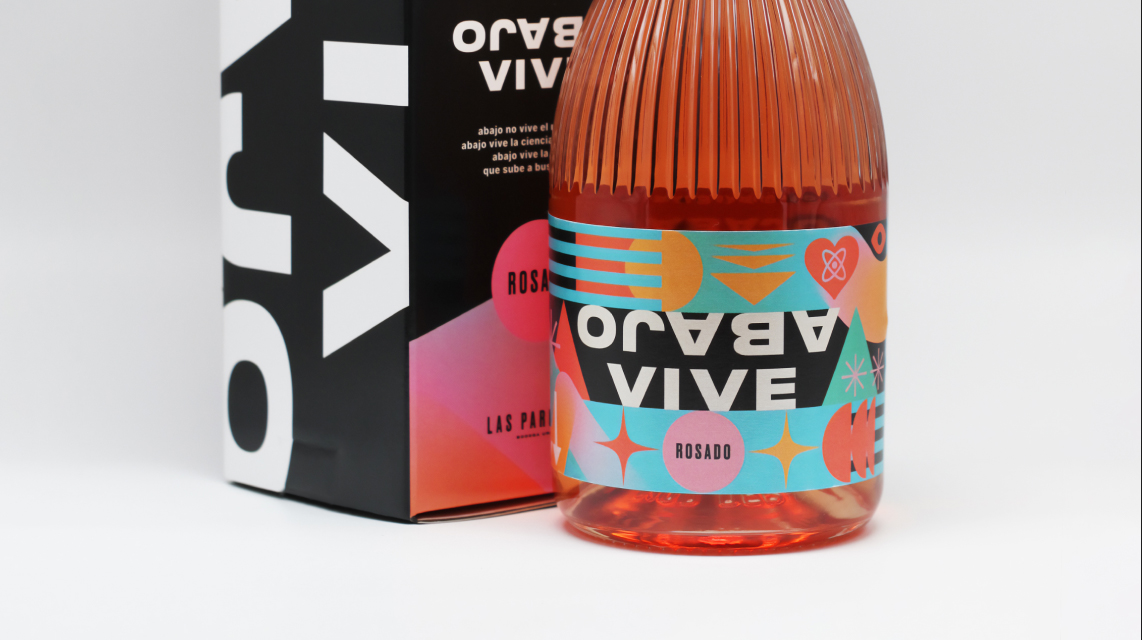
Immerse yourself in the fresh and vibrant flavor of “Abajo Vive”. A rosé that captures the essence of Candeleda in every taste


Below the monster does not live,
science and a passionate heart live below
below lives the seed that grows
up to search for the sun
The naming concept of “Abajo Vive” is based on a primitive idea. The winery is located in a warehouse beneath a country house. Because of that location we used to imagine that in this case there was no monster living in the basement, as wemight think by reading a children fairytale, but rather what lives there is an elixir made from grapes, conceived by mixing science. and a passionate heart.
We like to think that this monster was in reality our own fears and uncertainties that were finally transformed into our long time desiredproduct, a dream that finally came to life after a lot of effort, a lot of love and an incalculable desire to improve.
Rosé “Abajo Vive”
Varieties:100% Garnacha
Look: Bright onion skin color, with grayish iridescence.
Smell: Very floral nose, with aromas of almond blossom, white lilacs and roses, light aromatic compounds of peach in syrup and hints of blackberry.
Taste: It is a very dense rosé, it is unctuous, slightly sweet and at the same time fresh, without harshness or excessive acidity.
Ultimately, it is a nectar that encourages you to continue drinking.
LAS PARRALAS rosé is made with Garnacha grapes from the Tiétar Valley in Gredos, the harvest takes place at the end of August, the grapes are collected in boxes and spend the entire night on the farm, in our area August nights are usually cold, this will help us to lower the temperature of the grapes naturally.At dawn we select the grape clusters in the winery and the work begins.
The rosé grapes are destemmed and vatted in a winepress, where they are pressed by foot, the mustremain in contact with the skins for 2 days, after that time it is drawn off and fermentation is carried out in a stainless steel tank, controlling the temperature not to exceed 15ºC in order to prevent alcoholic fermentation from starting.In this way the productionof the aromas that are interesting is encouraged.
When the fermentation ends, the rosé is settled and aged for five months on the lees, with stirring every 15 days, thus increasing the density in the taste.
Total acidity
Volatile acidity
Alcohol strength
Residual sugars
Rosé “Abajo Vive”
Tasting notes
Varieties:100% Garnacha
Look: Bright onion skin color, with grayish iridescence.
Smell: Very floral nose, with aromas of almond blossom, white lilacs and roses, light aromatic compounds of peach in syrup and hints of blackberry.
Taste: It is a very dense rosé, it is unctuous, slightly sweet and at the same time fresh, without harshness or excessive acidity.
Ultimately, it is a nectar that encourages you to continue drinking.
Data sheet
LAS PARRALAS rosé is made with Garnacha grapes from the Tiétar Valley in Gredos, the harvest takes place at the end of August, the grapes are collected in boxes and spend the entire night on the farm, in our area August nights are usually cold, this will help us to lower the temperature of the grapes naturally.At dawn we select the grape clusters in the winery and the work begins.
The rosé grapes are destemmed and vatted in a winepress, where they are pressed by foot, the mustremain in contact with the skins for 2 days, after that time it is drawn off and fermentation is carried out in a stainless steel tank, controlling the temperature not to exceed 15ºC in order to prevent alcoholic fermentation from starting.In this way the productionof the aromas that are interesting is encouraged.
When the fermentation ends, the rosé is settled and aged for five months on the lees, with stirring every 15 days, thus increasing the density in the taste.
Total acidity
Volatile acidity
Alcohol strength
Residual sugars

